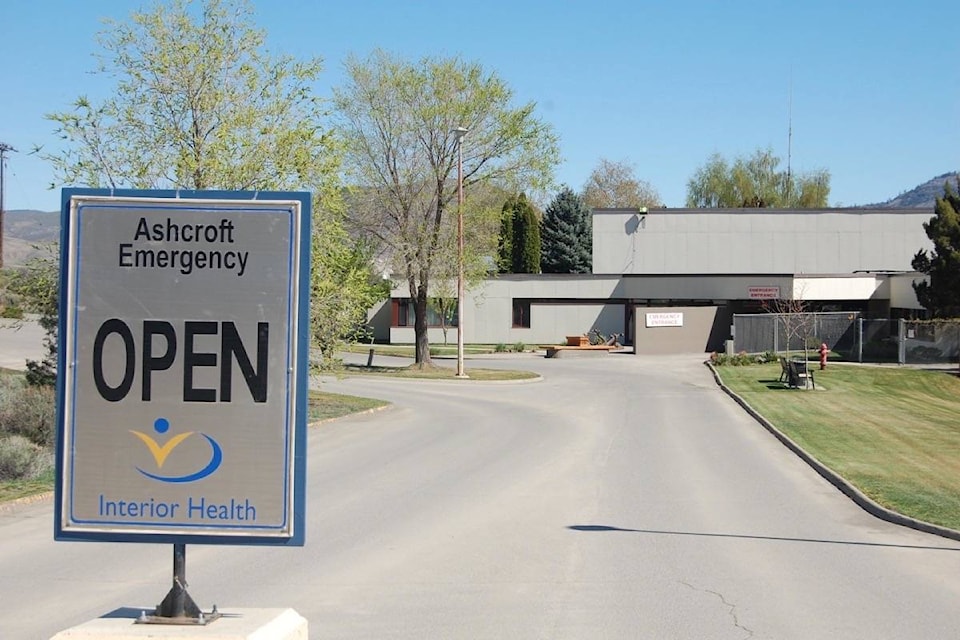Since August 2017, Interior Health has been using technology at the Ashcroft Hospital to make things easier for area patients undergoing elective daycare procedures at Lillooet Hospital, leading to decreased travel time and more convenience.
The virtual perioperative clinic in Lillooet is one of 12 around the province, and allows patients in other regional communities to find out details about their surgery and meet with team members while cutting down on the amount of time spent travelling to appointments.
Despite its small size, some 230 elective daycare procedures were performed at Lillooet Hospital during 2016/17. These included esophagus and digestive system biopsies, hernia repair, vasectomies, gynecologic surgery, hand surgery, laparoscopy, and dental and periodontal interventions.
Normally, patients from Ashcroft, Cache Creek, Walhachin, Savona, Clinton, the Bonaparte Reserve, the Ashcroft Reserve, and the Nicola Reserve would go to Kamloops for these procedures. However, Lillooet’s Dr. Nancy Humber—a general practitioner with enhanced surgical skills—saw an opportunity to make the surgical experience better for patients in the region.
“Surgeries can be carried out in Lillooet for further investigation of an undefined illness, such as skin cancer, complex lumps and bumps not done by a GP, symptoms that require procedural investigation,” says Humber. “It could be that the physician finds that something needs further investigation with a procedure not offered locally.”
The goal was to create a service delivery model from a regional lens, rather than a community one. Humber—who is Interior Health’s Executive Medical Director for IH West-Rural—also wanted to build an innovative surgical service delivery model for rural patients, one that would make the surgical experience a better one for the region’s patients.
She obtained funding from the Rural and Remote Divisions of Family Practice and Facility Engagement so that in the beginning Nicole Hochleitner-Wain, project coordinator in Lillooet, could book patients to attend a video conference in Ashcroft, travel to the hospital to set up the equipment, and meet the patient to get her or him settled; an especially important step for older patients who might be uncomfortable with technology. Now, says Humber, the equipment can just be turned on, and a patient navigator is available through the Wellness and Health Action Coalition to give whatever help is necessary.
“A history is taken to do a risk assessment, and see what procedure is needed, and what the best place for it is,” says Humber. “We want the right procedure at the right place at the right time.
“The patient is able to meet with the surgeon, anaesthetist, and operating room nurse. It means all the team members hear the same information at the same time. The anaesthetist will have his or her own questions for the patient, and the patient asks questions, which the most appropriate member of the team answers.
“Everything for all procedures is based on an urgent/emergent/elective wait list. The perioperative clinic makes things more efficient by doing it all at once. It’s better for continuity if everyone hears the same questions and answers, and it shortens the wait times. And the patient can have anyone they want present with them. It’s the same as a face-to-face meeting with a physician.” Any follow-up can be done virtually or by phone.
So far some 40 regional patients have taken advantage of Lillooet’s virtual perioperative clinic, and the Ashcroft Hospital site is now hoping to expand its network access to services with its own portable videoconferencing unit. Humber says feedback indicates that patients like the service.
“We did a survey, and the risk to patients of being on the road in winter, and the cost of repeated trips, was important. We’re seeing what works well, what doesn’t, and how we can make it better. People see value in it; they’re not upset about the virtual aspect.
“One of the more important things is that while this is a pilot project between two small sites, it’s learning on a provincial level. How do we deliver services to rural and remote communities with a small amount of resources? The blend between face-to-face and virtual services is cost-efficient, but it’s not just about saving services; it’s about how we deliver care to rural communities efficiently, and with a high value.”
editorial@accjournal.ca
Like us on Facebook and follow us on Twitter
